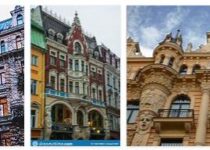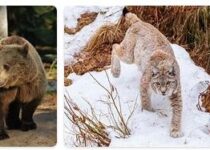Special Buildings and Fountains in Aachen, Germany
Bahkauv and Bahkauv wells
The Bahkauv, or “Bachkalf”, was honored with a fountain between the Elisenbrunnen and the market. This is a legendary figure who is said to have once moved through the Aachen brooks. The fountain system was built by the city’s residents and is located on the Büchel (also known as “Kolbert”). It was replaced some time ago by a modern fountain. The bahkauv, a large calf with sharp teeth, was a fabulous monster in the city of Aachen in the Middle Ages, which is said to have ambushed drunk men late at night and made them carry it on their shoulders on their way home. The calf’s burden became heavier when the men prayed and lighter when they cursed. So improper behavior resulted from the compulsion of this fabulous figure. According to historyaah, Aachen is a city located in Germany bordering with Belgium and the Netherlands.
Elisenbrunnen
Right next to the Elisenpark on Friedrich-Wilhelm-Platz, the Elisenbrunnen has been standing since 1827, a classicist building on which Johann Peter Cremer and the famous Berlin master builder Karl Friedrich Schinkel (1781-1841) contributed. However, the fountain had to be rebuilt true to the original in 1953 after being destroyed in World War II. With the fountain one wanted to do justice to the Kaiserquelle (= thermal spring, which was valued as medicinal water) and to represent its importance for the city. The fountain system consists of an open foyer, in front of which a pillar porch has been erected. There is also a pavilion on both sides. The warm water of the Kaiserquelle comes from two drinking fountains. The impressive scenario is only suppressed by the sulfur smell, which takes some getting used to, which emanates from the healing spring. The fountain, which is a symbol of the city next to the town hall and the Aachen cathedral, was named after Crown Princess Elisabeth Ludovika of Bavaria (called “Elise”) (1801-1873), the daughter of the Bavarian King Maximilian I (1756-1825), named. In 1823 she married the future king (from 1840) Friedrich Wilhelm IV (1795-1861) of Prussia
Eurogress Aachen
The congress center of the city of Aachen offers a hall for over 1,600 visitors and acts as the venue for many classical concerts, performances, meetings, etc. Here, among other things, the “Order against seriousness” is awarded and the “humor in office” is rewarded.
www.eurogress-aachen.de
Grass house, old town hall
This house on the fish market enchants with a facade that once belonged to the oldest town hall in Aachen and dates back to the 13th century. After the new town hall was built, the grass house was used as a courtroom, prison and place of execution, and it was rebuilt in 1886. The shape of the house that is accessible to visitors to the city today goes back to this renovation. The facade is dominated by three pointed arched windows and seven pointed arched figure niches. Statues of the seven electors can be seen in it. It was these seven electors (four secular and three clerical) who had to elect the emperor according to the provisions of the Golden Bull (1356). Nowadays the building is home to the Aachen city archives, in which, for example, valuable imperial documents are kept. The name either comes from “gras”, which means ghastly, which refers to the prison and the torture chamber in the building. But it can also come from grass, as a Franconian meadow is said to have been here in the past.
Löwenstein House The Löwenstein House
is located on the market, a Gothic building completed around 1345. After probably being used as an inn, it later served as a residence for the wealthier citizens of Aachen. One of these wealthier tenants from the 15th century was called Ida von Löwenstein and certainly gave the house its name. The house is used by the city today and shows the figure of St. Nepomuk, a Bohemian cleric and martyr who lived from around 1350 to 1393 in a niche a little below the corner tower.
Karlsbrunnen
This fountain in front of the town hall shows Charlemagne with the insignia of his power: orb and scepter. The fountain bowl of the oldest still-used fountain monument in the city was cast in Aachen itself in 1620. The baroque stone setting and the bronze fish were not added until the 18th century.
Klenkes Monument
Created by the sculptor Hubert Löneke in 1970, this memorial is reminiscent of an old recognition ritual of the Aacheners. The word “Klenkes” refers to the raised little finger. At the time of the flourishing needle industry in Aachen, this was used for the final inspection by notching out defective needles “uuszeklenke”. Whenever Aacheners met in the world, they recognized each other by this sign.
Marching Gate
The Marschiertor dates back to 1257 and is one of the largest western European city gates that have been preserved. In the course of its history it has served as a main arsenal, junk room, homeless shelter, youth hostel and as a home for the Hitler Youth. Currently, however, it is under the supervision of the carnival city guard Oecher Penn. It was lovingly renovated in the 1960s.
Ponttor
Aachen was once adorned by eleven imposing city gates. Today, next to the Marschiertor, only the Ponttor remains, a medieval double structure that was built in the second half of the 13th century as part of the outer wall ring.
Belvedere water tower
This 35 meter high reinforced concrete structure was erected on the Lousberg in 1956 and has a viewing platform, a restaurant and a rotating café. The latter rotates once on its own axis within 56 minutes. Unfortunately, the café can only be reached via 173 steps, so it requires physical effort. The tower was included in Aachen’s list of monuments in 1990 as a technical monument.
www.d Drehurm-aachen.de
Fountain “Cycle of Money”
In 1977 the sculptor Professor Karl-Henning Seemann created these six bronze figures on the edge of a fountain. They clarify the handling of money, with the movement of the water as a symbol for the permanent flow of money from one person to another.
Doll fountain
This fountain is located in the Aachener Krämerstrasse and was constructed in 1975 by the sculptor Bonifatius Stirnberg. The interesting articulated bronze figures, which are supposed to symbolize well-known and typical Aachen figures, are particularly popular with children. The rooster symbolizes the Gallic rooster, which is supposed to commemorate the time when Aachen was made the capital of the Roer Department by Napoleon. The market woman symbolizes the “free imperial city of Aachen”. The canon stands for the Aachen bishopric that was created in 1931. The professor symbolizes the science city Aachen and the masks are a symbol for the carnival.
Türelüre-Lißje-Brunnen
Designed by Hubert Löneke in 1967, an old Aachen children’s song is depicted in this fountain construction. This song is about three boys preventing a girl from going to the bathroom. The result of this obstruction of nature should not be difficult to guess.



